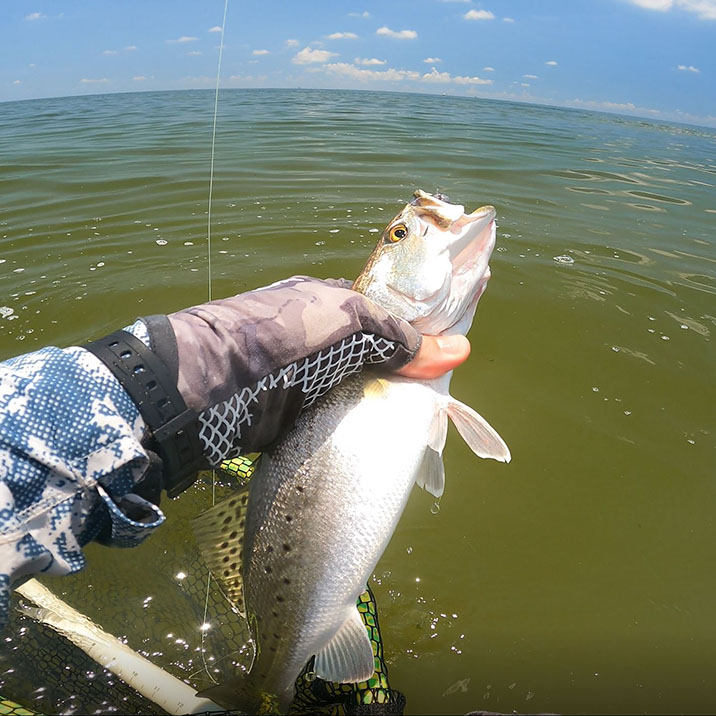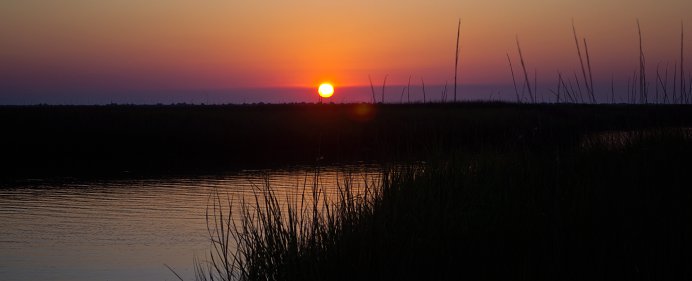You can let vibrio vulnificus ruin your summer fishing or you can fight back. This quick guide shows you how!
What is Vibrio Vulnificus?
It's a bacteria that floats freely in coastal waters. While its occurrences are rare, it tends to rear its ugly head during the summer months.
It thrives in warm seawater and infects people when it makes contact with open sores or cuts. But it can also find it's way onto fish and even fishing tackle.
Getting poked by a hook could amount to injecting yourself with a dose of vibrio! If left untreated, it can result in an amputation of the infected limb or even death.
That's pretty scary and not something you want to experience, so what can you do?
Tips & Tricks For Inshore Anglers To Prevent Vibrio Vulnificus Infection
I think the best thing you can do is cover up. This is one reason why I wear gloves, because the majority of contact with the water, fish and fishing tackle is going to happen through my hands.
If I do go wade fishing, I'll make a point to wear waders or — at the bare minimum — wear long pants and sleeves.
The idea here is to protect your skin as much as is reasonably possible.
After that, I make sure to safely handle fish and fishing tackle. Properly unhooking saltwater catfish with a catfish flipper is one such example. After that, I keep a couple sets of pliers handy. Two is one, and one is none!

I don't spend too much time wade fishing these days but, when I do, I'm certain to take the steps mentioned in this guide to prevent vibrio vulnificus.
Be Prepared To Fight Infection
I carry a bleach/water mix in a spray bottle in case something pokes me. I will spray the open wound since the spray serves as an excellent antiseptic and works better than alcohol.
Some people recommend 10 parts water for every 1 part bleach. I also carry plenty of bottled water to drain out the wound.
I think that a spray bottle with a bleach/water mix should be right there with your sunscreen and bug spray!
Take a Hot Bleach Bath After Your Trip
What if you love wade fishing? Well, you're not improving your chances of avoiding infection from vibrio vulnificus. I don't go wading very much these days, but if I do I'll take an extra measure:
After my fishing trip I take a bath in a hot tub with a little bit of bleach mixed in. Not a lot, just a couple capfuls. Don't go overboard with this.
I have heard of another effective antiseptic called Hibiclens. I've never used it but maybe I will carry it this summer.
Knowledge is Power To Fight Vibrio Vulnificus
The best thing I can do for you with this guide is just get you aware of this disease in the first place. It's happened that anglers get infected, experience symptoms then go to the hospital not knowing what's ailing them and — here's the surprise — neither does the hospital! At least, not without some investigation.
That's what happened to Charlie Schneider: they had to figure out what was wrong with him after he went to the emergency room for his symptoms.
"When he went to a hospital the night he discovered the infection, he was put on antibiotics, but the medical staff didn’t know what he was suffering from. After going to his family doctor only to find a similar result, he returned to the hospital the next morning to see an infectious-disease specialist."
It's possible that he could have been treated in a more impactful way sooner if he had mentioned something to the effect of, "Hey, I'm a fisherman, and there's this vibrio vulnificus disease that's out there that I could have contracted!"
Just makes sense to me.
Don't waste time getting to the doctor!
Above all, I think the best advice is to go see a doctor if you experience any symptoms of a vibrio vulnificus infection.
These symptoms include:
- soreness
- swelling
- red lines shooting from the infection site
Time is of the essence, so don't take any chances. After all, you wouldn't want to miss out on all that great summer fishing!

You want to be in your boat, not the hospital bed, for this gorgeous summer sunrise!
Over To You
Do you have any experience with vibrio vulnificus? Do you have any safety tips you'd like to share? If so, please post them in the comments section below!
Tight lines, and thanks for visiting my website!

You guys are making me afraid of the water. LOL
Seriously, I’m glad to hear she turned out alright. Your advice is sound and I am glad you shared it here. Thank you so much!
I am so sorry to hear that! This is proof positive that if you think anything is wrong at all, get to the doctor and tell them “I think I have vibrio”!
Again, I hate to hear such a sad story, but I think sharing those experiences here can be a good motivation for others. Thank you for visiting LAFB and sharing your story!
Lee, I am so sorry to hear what happened, but am thankful for you sharing the story. This is something very important for people to know. I think there’s something we can all learn from it. I’d rather just not oysters during the summer, especially seeing that they’re spawned out, but also because of vibrio.
Thank you for taking time to visit my site and comment.
At the end of August in 2012 one of my best friends and his nephew consumed raw oysters on Thursday night and my friend awoke Saturday morning with swollen, throbbing legs. He arrived at the emergency room around noon and his condition quickly worsened with his blood pressure dropping and trouble breathing as his lungs filled with fluid. The emergency room doctor indicated it was was sepsis with multiple organ failure but was clueless as to the source of the problem. He was intubated around 5 that afternoon and died shortly afterwards. After his death the some of the oyster shells were recovered and tested positive for Vibrio Vulnificus. The autopsy confirmed the cause of death. The nephew who ate the same oysters never experienced any symptoms with the only difference being his uncle had an impaired liver. So be warned if you have any health issues with your liver be especially careful during the hot winter months when the concentration of these bacteria are at peak levels. Oysters are filter feeders and therefore are a prime source for these bacteria.
Great article and right on the money! Use the bleach. I don’t go fishing without it!! I had a Brother-in-law that died from the virus after cutting his ankle while we were fishing. Three days later he died while in hospital.He waited to long to get care.
My wife was infected several years ago on her left arm. The only exposure was from reaching in the water to secure a boat towing strap. No visible open wounds. Our family Dr stated that stagnation of water at boat ramps is a very common place to catch vibrio. Emergency room prescribed medicine but they didn’t treat for vibrio. Initial diagnosis was cellulitis. We did state we had been saltwater fishing. The issue was there was no open wound or cut. So they thought she had bumped her arm as it was red and very tender. The next day the Family Dr finally diagnosed her correctly as he knew we were both active in saltwater fishing. Please stress that you were exposed to saltwater to doctors. And say the word vibrio!!!
Bob, I’m sorry to hear that. Man, it’s crazy you had to deal with that, but I am happy to hear you came out okay.
I dealt with this last year. 11 days in a hospital, 3 months of follow ups wound care, hyperbaric treatments and antibiotics. Even after I was done with the meds I couldn’t fish for another month due to increased sun sensitivity. But I was lucky as nothing had to be amputated.